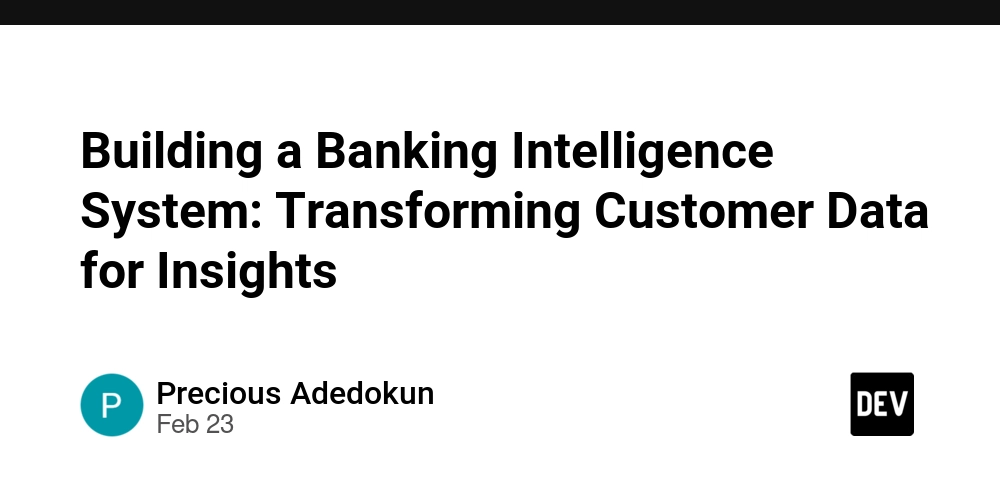Building a Banking Intelligence System: Transforming Customer Data for Insights
Introduction In today's digital banking era, financial institutions need intelligent systems to analyze customer behavior and make data-driven decisions. As part of my current project, I’m working on a Banking Intelligence System that transforms raw customer data into meaningful insights. A key part of this system is creating a denormalized feature table—a powerful dataset that enables efficient analytics and machine learning (ML). In this post, I’ll walk you through the process of building this feature table using MySQL and Python, and share some challenges I faced along the way. Understanding the Data To analyze customer behavior effectively, we need to process multiple types of banking data: ✅ Transactional Data – deposits, withdrawals, transfers, and payments. ✅ Account Data – balance history, account types, and credit limits. ✅ Customer Data – demographics, spending habits, and risk scores. The problem? These data points are stored in separate, normalized tables to ensure efficiency and data integrity. However, for advanced analytics, we need a denormalized dataset that combines relevant information into a single, query-friendly structure. Why a Denormalized Feature Table? A denormalized feature table aggregates data from multiple sources into a structured format, making it easier for machine learning models and business intelligence (BI) tools to extract insights quickly. Benefits of Denormalization:

Introduction
In today's digital banking era, financial institutions need intelligent systems to analyze customer behavior and make data-driven decisions. As part of my current project, I’m working on a Banking Intelligence System that transforms raw customer data into meaningful insights. A key part of this system is creating a denormalized feature table—a powerful dataset that enables efficient analytics and machine learning (ML).
In this post, I’ll walk you through the process of building this feature table using MySQL and Python, and share some challenges I faced along the way.
Understanding the Data
To analyze customer behavior effectively, we need to process multiple types of banking data:
✅ Transactional Data – deposits, withdrawals, transfers, and payments.
✅ Account Data – balance history, account types, and credit limits.
✅ Customer Data – demographics, spending habits, and risk scores.
The problem? These data points are stored in separate, normalized tables to ensure efficiency and data integrity. However, for advanced analytics, we need a denormalized dataset that combines relevant information into a single, query-friendly structure.
Why a Denormalized Feature Table?
A denormalized feature table aggregates data from multiple sources into a structured format, making it easier for machine learning models and business intelligence (BI) tools to extract insights quickly.
Benefits of Denormalization:










































































































































































![[The AI Show Episode 142]: ChatGPT’s New Image Generator, Studio Ghibli Craze and Backlash, Gemini 2.5, OpenAI Academy, 4o Updates, Vibe Marketing & xAI Acquires X](https://www.marketingaiinstitute.com/hubfs/ep%20142%20cover.png)



























































































































![[FREE EBOOKS] The Kubernetes Bible, The Ultimate Linux Shell Scripting Guide & Four More Best Selling Titles](https://www.javacodegeeks.com/wp-content/uploads/2012/12/jcg-logo.jpg)



![From drop-out to software architect with Jason Lengstorf [Podcast #167]](https://cdn.hashnode.com/res/hashnode/image/upload/v1743796461357/f3d19cd7-e6f5-4d7c-8bfc-eb974bc8da68.png?#)






































































































.png?#)




.jpg?#)































_Christophe_Coat_Alamy.jpg?#)








































































































![Rapidus in Talks With Apple as It Accelerates Toward 2nm Chip Production [Report]](https://www.iclarified.com/images/news/96937/96937/96937-640.jpg)









































































































































